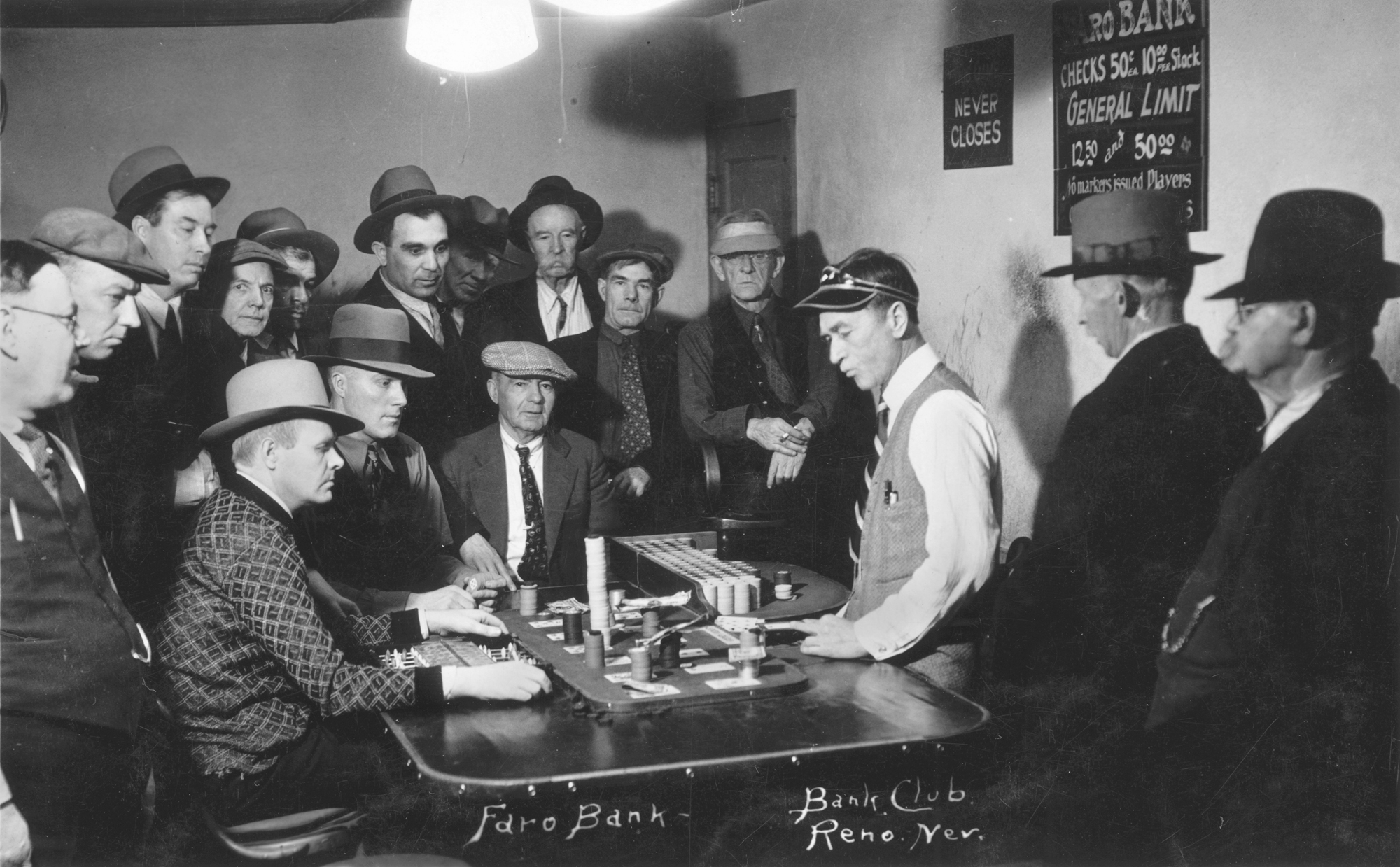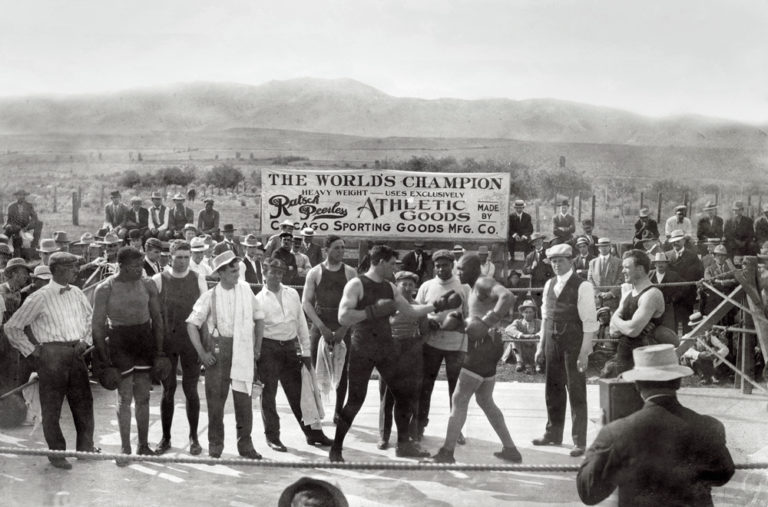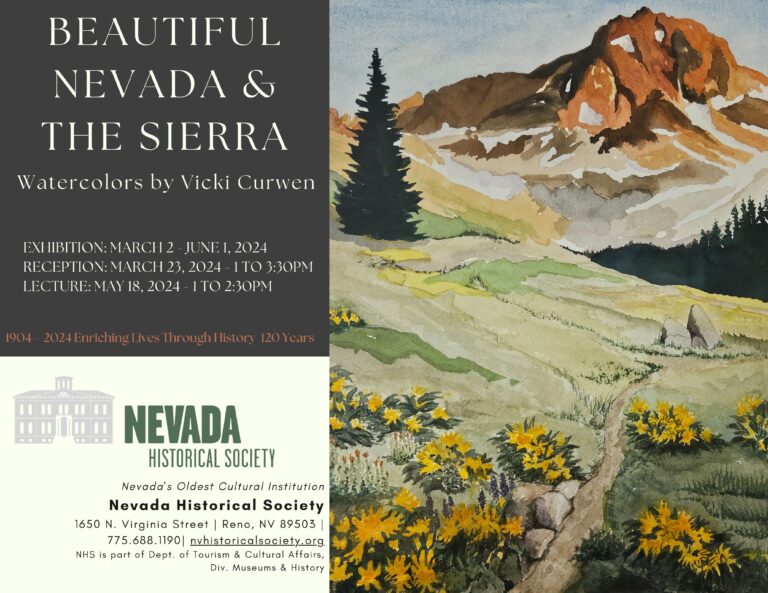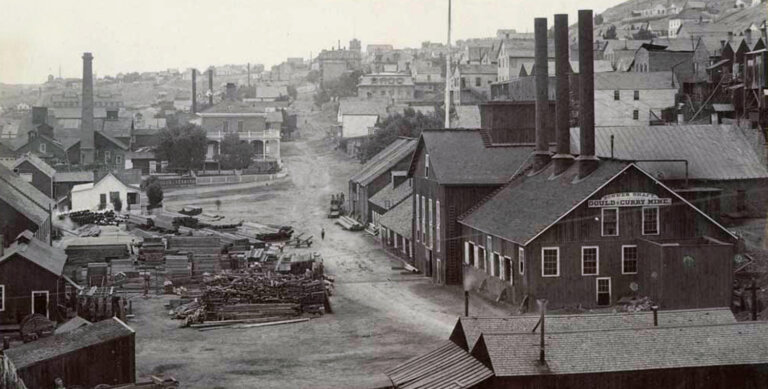RENO HISTORY

PERMANENT GALLERY – RENO HISTORY
Reno History Gallery – The Biggest Little City in the World is the latest version of the Nevada Historical Society’s Janice Pine Reno History Gallery. All of the interpretation and collections—artifacts, photographs, and print ephemera—come from the Nevada Historical Society. The Reno History Gallery utilizes the Historical Society’s collections to highlight five themes about how Reno became the Biggest Little City in the World.
Tough Little Town on the Truckee
When the first white men passed through this area in the 1840s, the land along the Truckee River was inhabited by Washoe and Paiute peoples. In the late 1840s and 1850s, thousands of travelers on their way to the California gold fields would linger a few days in the Truckee Meadows to allow their animals to feed on the native grasses before crossing the Sierra Nevada. The meadows, fed by the river, offered an oasis, but to travelers the river was also an obstacle.
Reno Noir: 20th Century Sin City
A mining boom that commenced in southwestern Nevada in 1900 gave the state an economic shot in the arm. Reno benefited from the new boom, both economically and through the arrival of George Wingfield, a millionaire who had made his fortune in Goldfield. From Reno, the powerful Wingfield ran and expanded his empire, which included such diversified endeavors as mining, banking, ranching, hotels, and politics. The coming of the twentieth century also began to change the spirit of the town, which then had a population of about 4,000. In 1903, Reno became an incorporated city (after an earlier unsuccessful attempt in 1897).
On the Road Again: Travel and Tourism in the Biggest Little City
From the beginning, transportation has been a significant theme in the history of Reno and the Truckee Meadows. The emigrant trails, stage roads, the Pony Express, highways, commercial aviation, and the railroad have all served to bring people and goods into and through the region. The transcontinental railroad, built through the area in 1868, represented the most important event in the sometimes sputtering creation of Reno. (In 1903, Reno’s neighbor to the east, Sparks, also began life as a railroad town – a new division point on the Southern Pacific Railroad.)

Everyday Reno: People, Places, and Things
Against the backdrop of its “sin city” reputation and an economy that relies on the tourist trade, there is – and always has been – an everyday Reno, a place where ordinary people live and work, go to school, worship, play, and socialize. This side of the Biggest Little City is represented through its homes, businesses, schools, and churches, its social organizations, government, local events, arts and culture, and, of course, its people.


